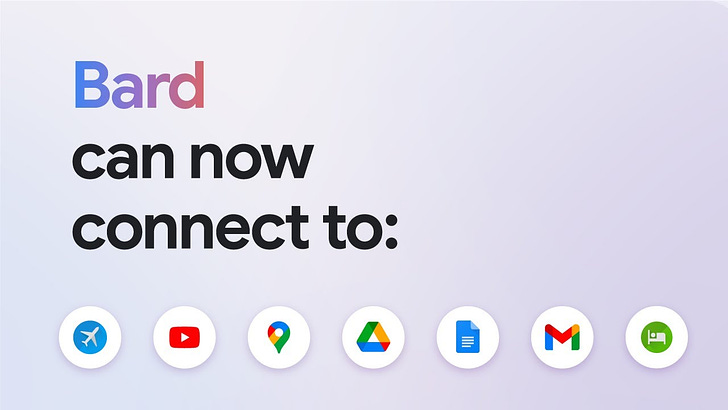Bard Comes to Google Assistant
Moving past timers, weather, and music
Google debuted Assistant with Bard at the Made by Google Event. While the event focuses primarily on devices such as the Pixel smartphone and Pixel Watch, the company carved out time to discuss a new set of generative AI fueled features coming to Google Assistant.
These features revolve around Google’s ChatGPT alternative, Bard. While Bard didn’t have an optimal debut in February, it has steadily improved. Two weeks ago, the company announced its integration with Google Docs, Gmail, Travel, Maps, and other Google services, and as of July, it supports more than 40 languages. Bard will soon be accessible by Google’s trusted testers as a feature of Google Assistant.
Upleveling The Assistant
It was interesting to see Google take a similar approach to Amazon when it demonstrated the new large language model (LLM) enabled Alexa in September. Sissie Hsiao, vice president and general manager, Google Assistant and Bard, pointed out that the Assistant is good for many things, but it couldn’t live up to the original vision because of technology limitations. She said during her presentation:
Bard's language understanding, complex reasoning and generative capabilities have fueled our excitement in realizing our vision for Google Assistant. While Assistant is great at handling quick tasks like setting timers, giving weather updates, and making quick calls, there is so much more that we've always envisioned a deeply capable personal assistant should be able to do. But the technology to deliver it didn't exist, until now.
Today, I'm excited to share an early peek as something we've been working on. We call it Assistant with Bard, and it brings the best of both experiences right to your phone. It's a step towards our vision to deliver the world's most helpful personal assistant.
Assistant with Bard combines personalized help with reasoning and generative capabilities, so it can hear, it can speak, it can see, and it can even take actions that help you out. Right on the device you always have with you. This is an experiment we're super excited about.
Hsiao went on to discuss several features of the combined Bard Assistant. She asked Bard (or was it Google Assistant with Bard):
To catch her up on her email inbox. Bard the Assistant created summaries of what it identified as three important messages.
To help plan a grocery shopping list for a vacation house with friends and then asked to save it to a Google Doc.
For directions to a party and then texted a friend to see if they wanted to carpool.
To create a fun caption for an image of her dog.
The first example featured prioritization and summarization. These both rely on personalization capabilities. The second example highlighted Bard’s knowledge and integration with Google Workspace. Maps integration and text messages (the only purely Google Assistant feature), along with AI vision (to interpret the image) and generative text, rounded out the examples.
Assistant with Bard will indeed be a more useful Google Assistant. The Assistant’s limitation is based on its reliance on intents. If there was no intent defined, you could not receive help. If the intent was only loosely defined, then the response was likely to be incorrect or too general to meet the objective. Google Assistant could only do what Google engineers anticipated users would want it to do (or what third-party developers wanted it to deliver when that was still an option!).
The Assistant Convergence of Technologies
ChatGPT ushered in a new type of digital assistant. As I have discussed previously, Adam Cheyer is the co-founder of Siri (acquired by Apple) and Viv Labs (acquired by Samsung to become Bixby) and has been building digital assistants for 30 years. He says there are doing assistants (e.g., Siri, Alexa, Google Assistant, Bixby, etc.) and knowing assistants (e.g., ChatGPT, Bard, Claude, etc.). The doing assistants are task-oriented and were historically limited in executing knowing tasks. LLMs have made a wide range of knowing tasks feasible.
The convergence of Bard with Google Assistant fuses the knowing and doing assistant domains. Beyond this, Bard is also a “creating” assistant due to its generative features. I don’t expect consumers to have “one assistant” because there is always room for a higher-quality solution that is optimized to a single domain or functional capability. However, Assistant with Bard does present a more capable and more personal general-purpose assistant. This means a Bard Assistant may take the greater share of a user’s total digital assistant use.
What’s in a Name?
As a side note, have you noticed that Google gave Bard a name but flatly refused to do so with Google Assistant? Does this indicate Google believes it made a mistake by not naming The Assistant and giving it the patina of persona and approachability? I say yes. Note how Bard is as different from the blandly generic name ChatGPT as Alexa is to the blandly generic Google Assistant name.
Now consider the name Assitant with Bard. Google Assistant is adding Bard as a feature. Bard is not adding Google Assistant as a feature. This makes sense. The general-purpose and generically named Google Assistant is designed to be an efficient helper and also to defy product category boundaries. Bard knows things and can create things. The Assistant can do things, including the act of connecting users to the “knowing” and “creating” assistant Bard.
This may be important at some point. Google is known for discontinuing products that don’t meet its expectations and consolidating products when they overlap. Google Assistant and Bard have distinct capabilities, but these will begin to overlap, and they both fall into the same digital assistant genre. At some point, I expect the tools to truly converge.
Will the Assistant name remain, or will it be Bard? If it’s the latter, will this be a back-door method for Google to rectify its mistake of not giving Google Assistant a more distinctive name?
More importantly, it seems like Bard will win out from a functional perspective. This is not only because of the magical understanding abilities of LLMs. Nor is it solely related to the fact that investment in Bard is expanding while Google Assistant is shrinking.
Bard is the more likely vehicle for greater user personalization. That will be the truly sticky feature of assistants. It is also a newer technology and already has distribution in the hundreds of millions.
You’ll Have to Wait
You can use Bard, and you can use Google Assistant, but you will have to wait to try them together. Hsiao said the combined solution will be rolling out with select testers shortly and later expanding.
What do you think? Will this Bard instigate a Google Assistant takeover? Will it be differentiated? Let me know in the comments below.





Personalization drives product innovation, if google doesn’t get there someone else will. I can speak from experience in saying that with AI, google wants to be the platform company, underpinning other peoples products. They’d probably rather step away from the hardware as more ‘assistant’ tech gets folded into our everyday lives and provide general AI LLM models for others to purchase/use & build on than the other way around like they are today.
I love your analysis on Google's naming conundrum for their assistant. Their stance has always been to have a persona but no outward personality, like a name or avatar. Now with Bard picking up steam, the Google Assistant is experiencing a small identity crisis. It seems like they're buying themselves some time with "Assistant with Bard", to figure out what they clearly haven't figured out yet.
Bard in the meantime got access to the Google Suite products, too, which in a weird way competes with Duet AI, similar to how Bing Chat and 365 Copilot are cannibalizing on each other.